Introduction to Nobunaga Teacher's Young Bride
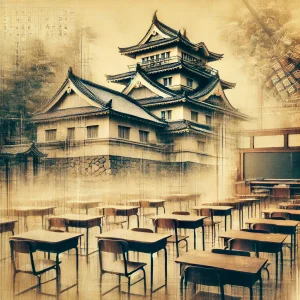
So, have you ever wondered what would happen if a famous historical figure suddenly found himself in a completely modern and unexpected situation? That’s exactly the premise of Nobunaga Teacher’s Young Bride, an anime that takes the legendary Oda Nobunaga and thrusts him into a comedic, time-traveling adventure. Imagine this: Nobunaga, a warlord known for his fierce tactics and unyielding ambition, suddenly finds himself not on a battlefield but in a modern classroom, and—get this—he’s married to a young girl from the Sengoku period! It’s as if history itself decided to play a prank on him.
The story kicks off with Nobunaga, a high school teacher in the present day, who is shocked when a girl named Kichou, claiming to be his bride from the past, suddenly appears in his life. This isn’t just any girl, though. She’s from the Sengoku era, believing she has been sent to fulfill her duty as his wife. The whole situation is as absurd as it is entertaining, blending historical references with a light-hearted comedic tone that keeps you hooked from the start.
Now, what really makes Nobunaga Teacher’s Young Bride stand out is its unique blend of history and humor. On one hand, you’ve got these nods to Japan’s rich historical past, especially with characters like Nobunaga and Kichou, who are real figures from the Sengoku period. On the other hand, the series doesn’t take itself too seriously, using the historical context as a backdrop for hilarious, often absurd situations. You’ll find yourself laughing at the sheer ridiculousness of a warlord dealing with modern-day dilemmas, like navigating a classroom or understanding the concept of dating.
The dialogue between characters is sharp and witty, often playing on the cultural and temporal differences between Nobunaga and those around him. It’s not just about the laughs, though. There’s a certain charm in how the anime explores the contrast between Nobunaga’s stern, battle-hardened persona and the more light-hearted, everyday life he must now lead. This blend of the old and new, the serious and the silly, makes Nobunaga Teacher’s Young Bride a refreshing take on both historical fiction and romantic comedy.
Plot Overview
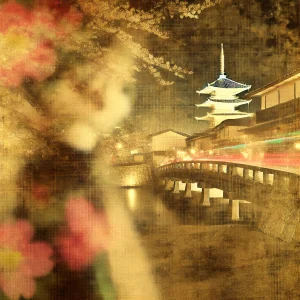
Alright, let’s dive into the storyline of Nobunaga Teacher’s Young Bride. Imagine this: you’re Nobunaga Oda, the infamous warlord from Japan’s Sengoku period. You’ve been through countless battles, made history with your strategic genius, and suddenly… you’re a high school teacher in modern-day Japan. Sounds wild, right? Well, that’s just the beginning.
One day, Nobunaga, now a teacher, is going about his usual routine when, out of nowhere, a young girl named Kichou appears before him. She’s not just any girl, though. She’s from the Sengoku era, and she’s convinced that Nobunaga is her husband! Kichou believes she’s been transported through time to fulfill her wifely duties, and she’s fully committed to the role, despite being in a completely unfamiliar world. Can you imagine the shock on Nobunaga’s face? One minute, he’s teaching history, and the next, he’s living it.
Now, here’s where it gets really interesting. Kichou’s arrival sparks a series of hilarious and often confusing situations. She’s trying to navigate the modern world, all while maintaining the grace and poise of a Sengoku-era lady. And Nobunaga? He’s trying to figure out how to deal with a bride who’s hundreds of years out of place. The cultural and temporal differences between them lead to endless comedic misunderstandings. For instance, Kichou’s attempts to perform her “wifely duties” often clash with modern sensibilities, leading to moments that are as awkward as they are funny.
But it’s not just about the laughs. The anime also touches on deeper themes, like the clash of past and present, and the idea of destiny versus free will. Nobunaga is constantly torn between his past identity as a fearsome warlord and his current life as a teacher. Kichou, on the other hand, struggles to reconcile her traditional values with the realities of modern life. Their interactions are a mix of comedy, tension, and, surprisingly, some heartfelt moments that add depth to the story.
As more characters from the past make their way into the present, things get even more chaotic. Each one brings their own set of challenges, misunderstandings, and, of course, humor. The time-travel element is the driving force behind the plot, creating situations that are both unpredictable and entertaining. You never know what’s going to happen next, which keeps the storyline fresh and engaging.
Character Profiles
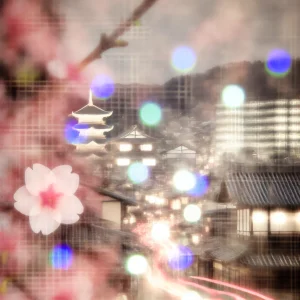
Let's talk about the characters that make Nobunaga Teacher's Young Bride such an interesting and entertaining watch. First up, we have the man himself—Nobunaga Oda. Now, if you know anything about Japanese history, you’ll recognize Nobunaga as one of the most formidable warlords from the Sengoku period. He was known for his ruthless strategies and ambition to unify Japan. But here, he’s not commanding armies; he’s a high school teacher in modern Japan. Quite the change, right?
In this anime, Nobunaga is still the strong-willed, confident figure you’d expect, but he’s also thrown into situations that leave him completely bewildered. His life takes a wild turn when Kichou, a young girl from the Sengoku period, appears and declares herself as his bride. Nobunaga’s reaction? Shock, confusion, and a bit of exasperation. He’s not exactly sure how to deal with this new “wife” of his, especially since she’s from a completely different time. Despite his initial reluctance, Nobunaga’s protective side emerges as he navigates the bizarre circumstances Kichou brings into his life.
And speaking of Kichou, she’s the second major character we need to discuss. Kichou is a young girl from the Sengoku era, and she’s as loyal and dutiful as they come. Believing she’s fulfilling her destiny, she travels through time to be with her husband, Nobunaga. But, of course, things don’t go as smoothly as she expected. Kichou is a mix of innocence and determination. She’s deeply committed to her role as Nobunaga’s wife, trying her best to adapt to the strange new world she finds herself in. Her dedication leads to some pretty hilarious misunderstandings, especially when she tries to perform traditional wifely duties in a modern context.
The relationship between Nobunaga and Kichou is at the heart of the anime. It’s a blend of comedy, tension, and a touch of tenderness. Nobunaga, despite his initial resistance, can’t help but be drawn to Kichou’s earnestness. She, on the other hand, is constantly trying to live up to the image of a perfect wife, even if her understanding of what that means is a bit outdated. Their interactions are filled with both awkward moments and genuine connection, making their dynamic one of the most intriguing aspects of the show.
But let’s not forget about the other characters who add even more flavor to the story. As more figures from the past make their appearance, each one brings their own quirks and challenges. These characters, whether allies or rivals, further complicate Nobunaga and Kichou’s already chaotic life, leading to even more comedic and dramatic situations.
Themes and Motifs
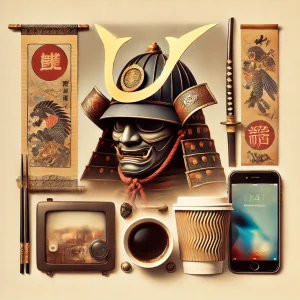
Let’s get into the heart of Nobunaga Teacher’s Young Bride by exploring its key themes and motifs. At first glance, you might think this anime is just a light-hearted comedy with a touch of romance, but there’s actually a lot more going on beneath the surface.
First off, the theme of historical romance is central to the story. You’ve got Nobunaga Oda, one of Japan’s most famous historical figures, and Kichou, his supposed bride from the Sengoku period. Their relationship isn’t just about the usual romantic tropes; it’s about the clash between two worlds—one from the distant past and the other from the present. The anime plays with this contrast, showing how love and relationships might have been understood differently in Nobunaga’s time compared to now. The historical backdrop adds a unique layer to their interactions, making their romance both amusing and oddly poignant.
But don’t be fooled into thinking this is all about romance. The comedy in Nobunaga Teacher’s Young Bride is where the anime truly shines. The humor comes from the absurdity of a warlord trying to navigate modern life, especially when he’s confronted with a young bride who’s just as out of place as he is. The comedic situations often arise from Kichou’s attempts to fulfill her wifely duties in ways that seem bizarre or outdated to modern sensibilities. Nobunaga’s reactions to these situations are priceless, ranging from bewildered to utterly exasperated. The comedy is sharp, witty, and never fails to entertain, making it a key element that keeps viewers hooked.
Now, let’s talk about the cultural impact of blending historical figures with modern humor. This theme isn’t just about making jokes; it’s about exploring how different eras perceive things like duty, honor, and relationships. Nobunaga, who once commanded respect and fear on the battlefield, now finds himself in situations where those traits don’t quite translate. The anime uses this to highlight the sometimes ridiculous nature of cultural norms and how they evolve over time. It’s interesting to see how Nobunaga’s old-fashioned values clash with today’s world, and it’s this clash that often drives both the humor and the deeper reflections in the series.
Another important motif is time travel, which isn’t just a plot device but also a way to explore the idea of identity. Nobunaga’s journey is as much about reconciling his past with his present as it is about dealing with the unexpected arrival of Kichou. The time-travel element allows the anime to delve into questions of destiny, change, and the impact of history on our lives today. How much of who we are is shaped by the time we live in? And what happens when you’re suddenly thrown into a completely different era?
Reception and Impact
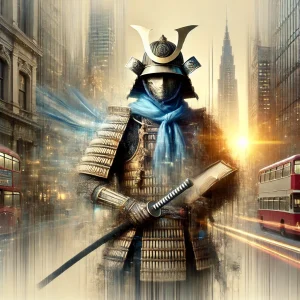
Let’s chat about how Nobunaga Teacher’s Young Bride was received both in Japan and internationally. This anime, with its mix of historical figures and modern-day humor, certainly didn’t go unnoticed when it first aired.
In Japan, the reception was a bit of a mixed bag. On one hand, the show’s quirky premise drew in viewers who were curious about how a legendary warlord like Nobunaga Oda would be portrayed in a comedic, modern setting. Many found the concept of a time-traveling bride from the Sengoku period both entertaining and refreshing. The humor, which plays heavily on the cultural and temporal clashes, resonated well with audiences who appreciated the blend of history and absurdity. Fans particularly enjoyed the light-hearted take on such a well-known historical figure, as it offered a new perspective on Nobunaga’s character—one that was more human and relatable than the often serious and intense depictions seen in other media.
However, not everyone was on board with this approach. Some viewers were a bit hesitant about the show’s playful treatment of such a revered figure. The idea of a powerful warlord being reduced to dealing with everyday modern problems, and the awkwardness of an unexpected marriage, didn’t sit well with everyone. There were discussions on whether the anime’s tone was appropriate, given the historical context. But despite these reservations, many viewers still found the show’s humor and charm hard to resist.
Internationally, Nobunaga Teacher’s Young Bride found a niche audience, particularly among fans of anime that blend history with comedy. The series gained attention for its unique concept, and for many non-Japanese viewers, it served as an interesting introduction to Japan’s Sengoku period, albeit through a highly fictionalized and comedic lens. The cultural differences highlighted in the show were both amusing and educational for international audiences, who enjoyed seeing how Japan’s historical figures could be adapted into such a light-hearted narrative.
Viewer reactions abroad mirrored those in Japan, with some embracing the show’s quirky humor, while others found it a bit too outlandish. But overall, the show was appreciated for its originality and the way it managed to make a historical figure like Nobunaga accessible and entertaining to a modern audience.
In terms of its influence on the genre, Nobunaga Teacher’s Young Bride added to the growing trend of anime that play with historical settings in a non-traditional way. It joined the ranks of shows that aren’t afraid to take well-known figures or periods and turn them on their head, blending them with modern-day elements to create something new and unexpected. This approach has paved the way for more anime to experiment with history, proving that even the most serious subjects can have a place in the world of comedy and romance.
All in all, while Nobunaga Teacher’s Young Bride might not be the most conventional portrayal of its titular character, it certainly left an impression both at home and abroad, offering viewers a fresh take on what historical anime can be.
